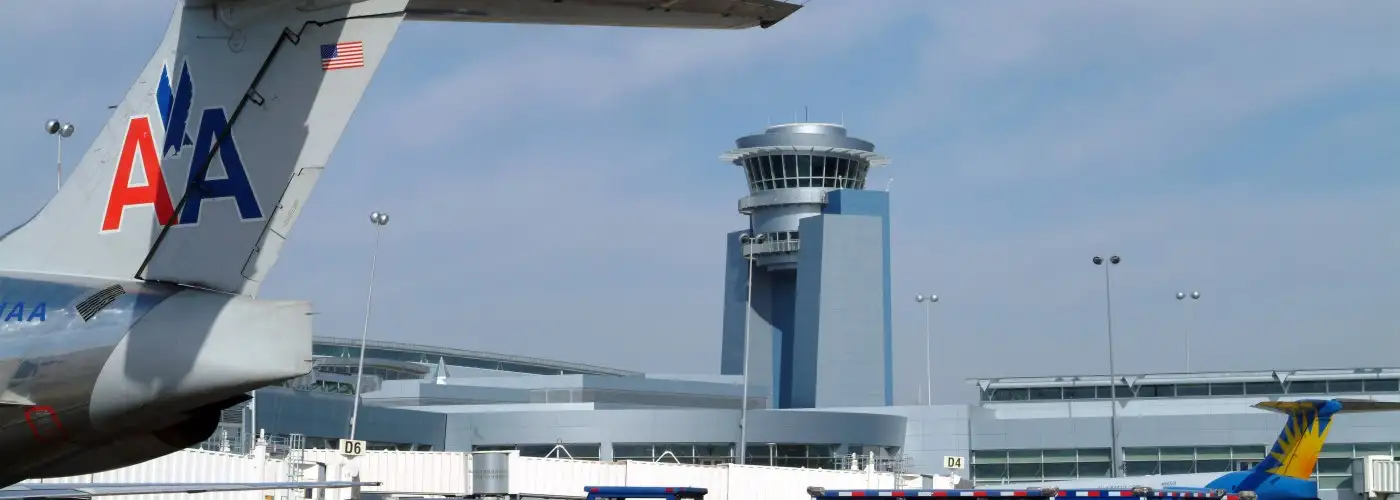According to news releases issued by both American and US Airways, the two airlines have overcome objections by the Department of Justice (DOJ) and seven state Attorneys General to their proposed merger.
Assuming the agreement is approved by the Federal District Court in the District of Columbia, it will forestall the DOJ’s antitrust lawsuit, scheduled to be heard in court beginning November 25, and green light the airlines’ merger. The companies now expect the merger to be completed during December, although integrating the two operations will take many months.
It is also expected that the settlement will remove the final hurdle to American’s emergence from Chapter 11 bankruptcy protection, which was predicated on its merging with US Airways and still requires the approval of the bankruptcy judge.
Among the concessions included in the agreement:
- The airlines will divest 52 slot pairs at Washington Reagan National Airport and 17 slot pairs at New York LaGuardia Airport, as well as certain gates and related facilities to support service at those airports.
- The airlines also will divest two gates at each of Boston Logan International Airport, Chicago O’Hare International Airport, Dallas Love Field, Los Angeles International Airport, and Miami International Airport.
- The airlines agreed to maintain hubs in Charlotte, New York (Kennedy), Los Angeles, Miami, Chicago (O’Hare), Philadelphia, and Phoenix for three years, and to provide daily scheduled service from one or more of its hubs to each plaintiff state airport that has scheduled daily service for five years.
Although the settlement somewhat mitigates market concentration in a number of defined markets, it fails to address to overarching issue of industry consolidation. With less competition overall, ticket prices will increase and service will further erode. Consumers will pay more and get less.
In the end, the Justice Department stopped well short of providing the traveling public with the justice they need and deserve.
Merger Cheat Sheet
- The new company would retain the “American Airlines” name and be based at American’s Ft. Worth headquarters.
- US Airways chief Doug Parker will be the new CEO. American chief Tom Horton will be named chairman of the new board and remain in that position until the spring of 2014 when the company’s first annual shareholder meeting will be held. When Horton departs the board, Parker will assume his position as chairman.
- American’s creditors would own around 72 percent of the new company; US Airways shareholders would get the rest.
- Based on 2012 results, the new company would have generated $38.7 billion in revenue.
- The merger is expected to generate around $1 billion in combined extra revenue and cost savings for the new company.
- The new company will be valued at around $11 billion.
- Combining the third- and fifth-largest U.S. carriers will create the world’s largest airline, in terms of passenger traffic.
- Prior to any post-merger rationalization, the two airlines will have around 120,000 employees, 950 planes, 6,500 daily flights, and eight major hubs (American: Dallas, Miami, Chicago, Los Angeles, New York; US Airways: Phoenix, Philadelphia, Charlotte). Although the carriers promise to maintain all current hubs, Phoenix and Philadelphia are likely to be downsized in the post-merger “rationalization.”
- The new American will be a member of the oneworld alliance, not the Star Alliance.
- The merger is subject to review and approval by U.S. regulators. American and US Air claim there is relatively little overlap between the two airlines’ networks. The DOJ disagrees.
- The actual merger won’t happen overnight. United and Delta required five and seven months respectively to secure the necessary approvals for their mergers.
- It was 22 months after their merger closed before United and Continental finally merged their frequent flyer programs. Expect a similar post-close interval before American and US Airways consolidate their programs.
- Comparisons between American and US Airways’ current mileage programs are probably moot since there’s a high likelihood that an entirely new revenue-based program (like Southwest’s) will be introduced to replace both programs.
- After the merger, 83 percent of U.S. domestic air traffic will be in the hands of just four airlines (American 26 percent, United 19.3 percent, Delta 19.2 percent, Southwest 17.3 percent).
Reader Reality Check
As a travel consumer, is the American-US Airways merger in your best interest?
This article originally appeared on FrequentFlier.com.
You Might Also Like:
We hand-pick everything we recommend and select items through testing and reviews. Some products are sent to us free of charge with no incentive to offer a favorable review. We offer our unbiased opinions and do not accept compensation to review products. All items are in stock and prices are accurate at the time of publication. If you buy something through our links, we may earn a commission.
Related
Top Fares From Columbus, OH
Today's Top Travel Deals
Brought to you by ShermansTravel
Shop and Save with Country Inns...
Patricia Magaña
 Hotel & Lodging Deals
Hotel & Lodging Deals
$229 -- Chicago: Discounted Rates and...
Francesca Miele
 Hotel & Lodging Deals
$229+
Hotel & Lodging Deals
$229+
$188 -- Honolulu: Save on Oceanview...
Abigail Lamay
 Hotel & Lodging Deals
$188+
Hotel & Lodging Deals
$188+




